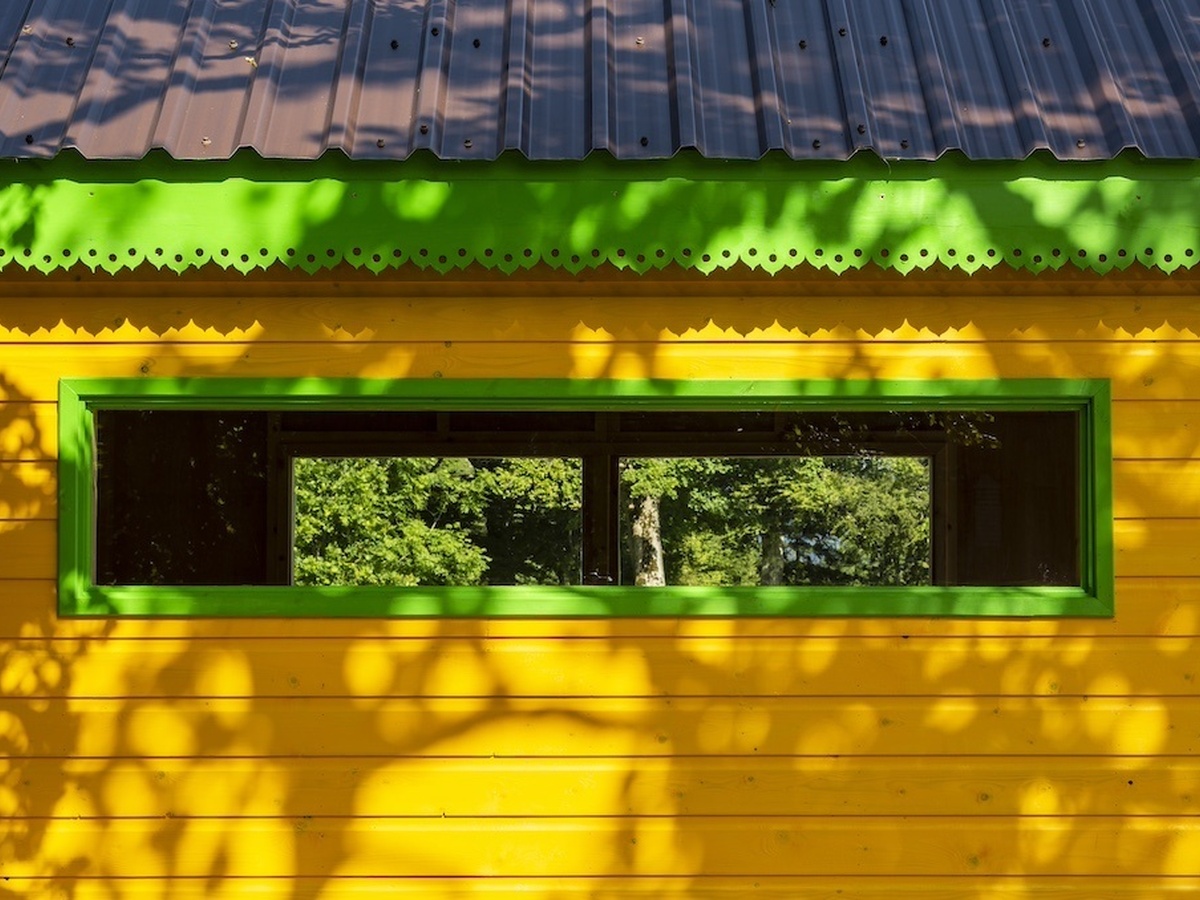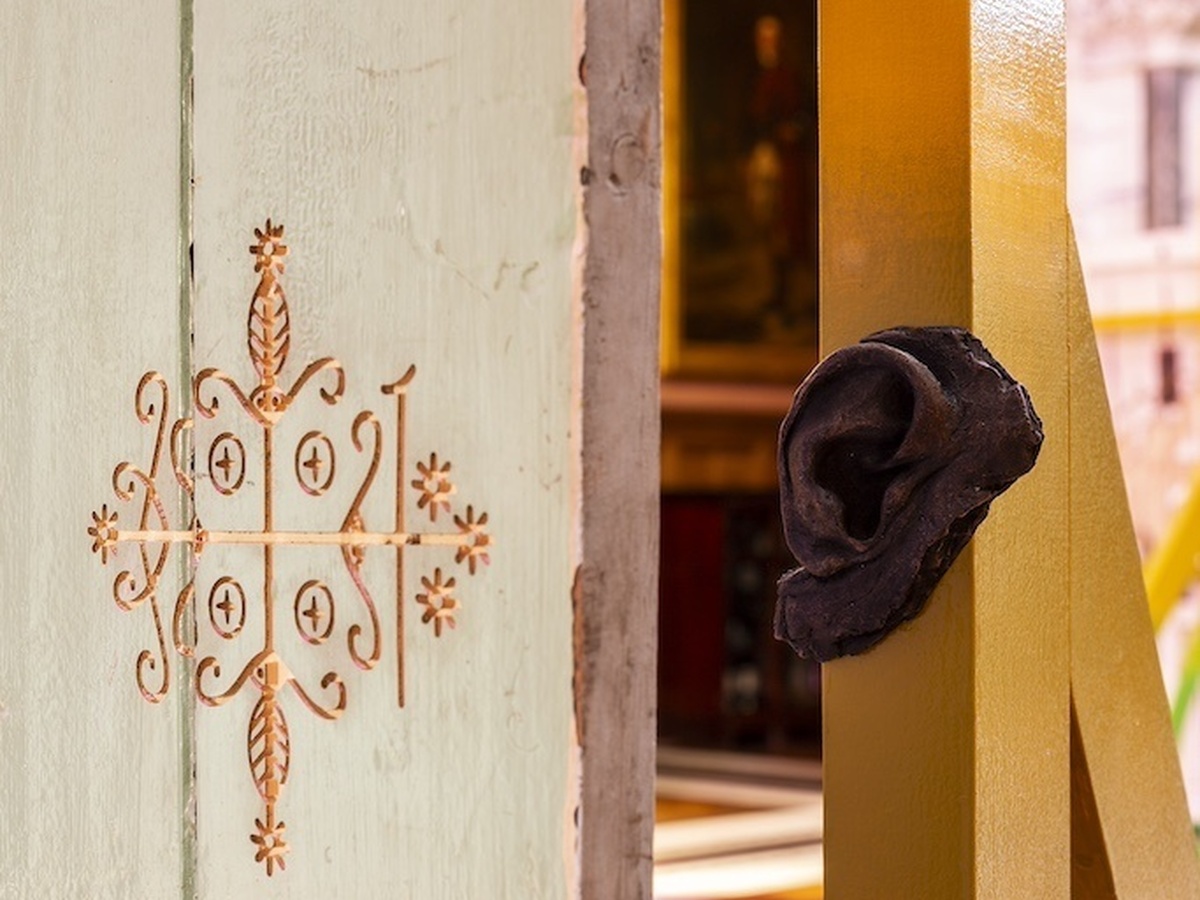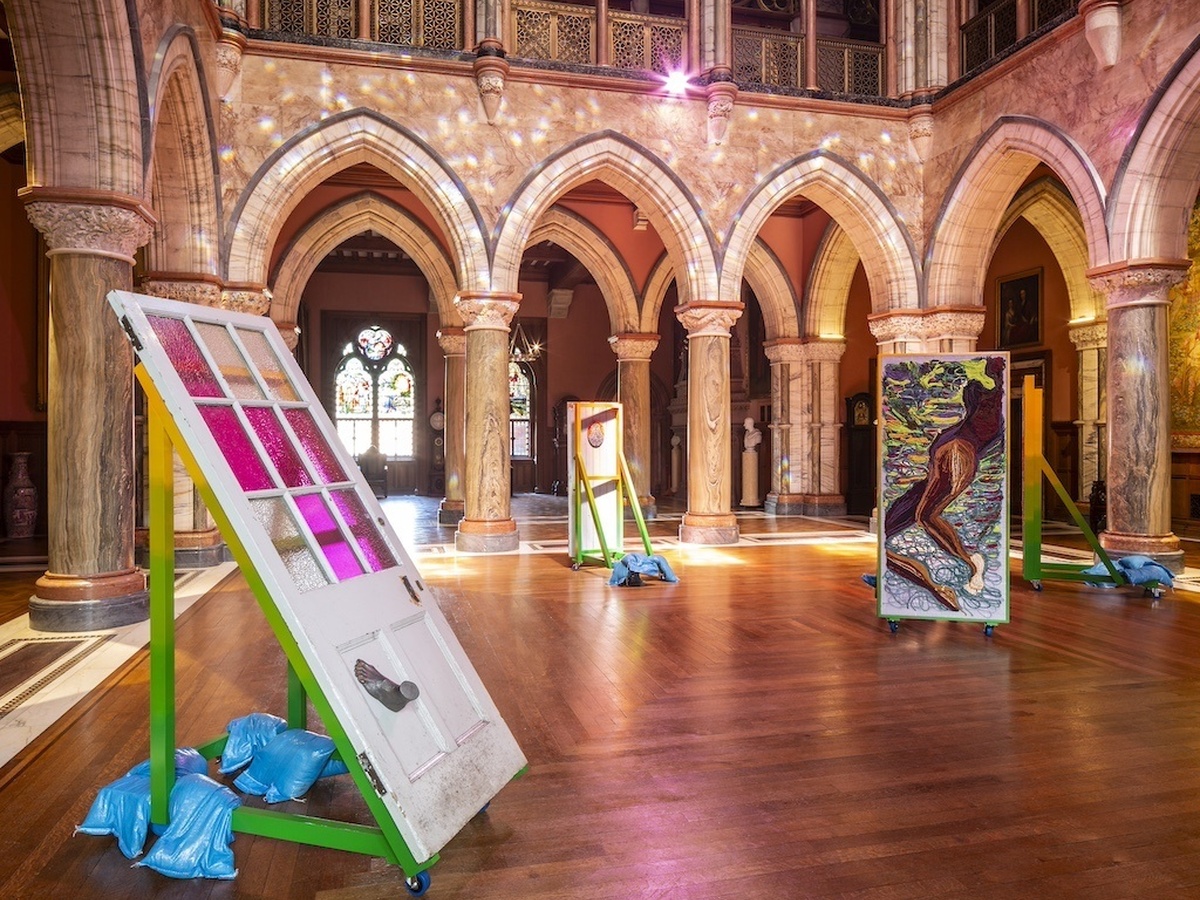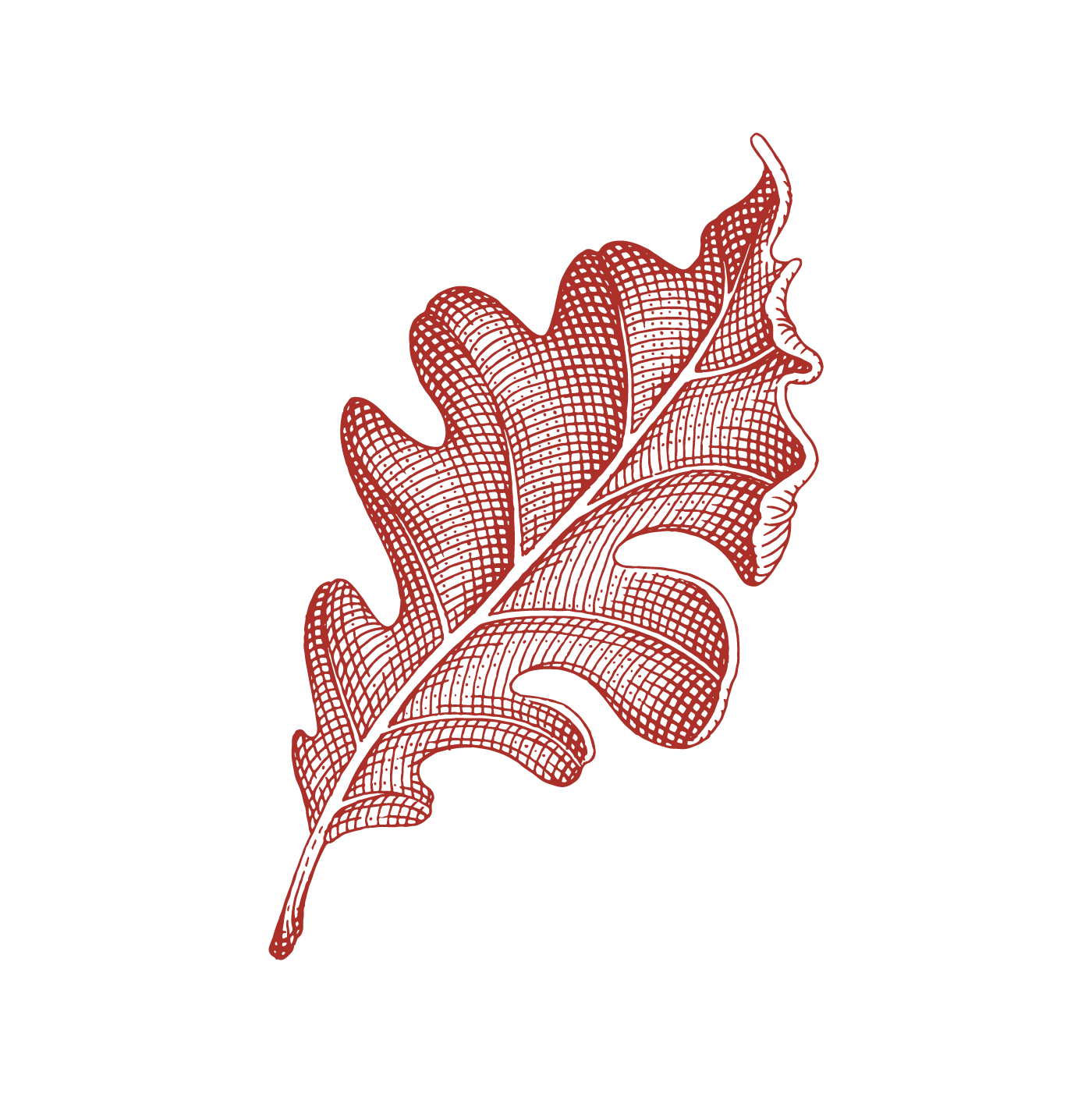Alberta Whittle: Under the skin of the ocean, the thing urges us up wild
Mount Stuart Trust's first contemporary art exhibition of 2024, is by Scottish-Barbadian artist Alberta Whittle.
The water, its rhythms, and its presence as a transmitter of energy is at the core of Alberta Whittle’s newest creative project at Mount Stuart. The ocean or sea as an active waterway that can create connections rather than exist solely as a barrier has become a significant character in her new work. Growing up in Barbados, Alberta’s practice recalls the wateriness of island life, which finds echoes in her thinking about Bute, its character with the wider Atlantic Ocean.
Spending time with the ancient history of the island; its standing stones, burial chambers and archaeological sites, Alberta has become increasingly curious about the function of waterways on Bute and in particular their significance in ongoing histories of migration.
This exhibition is a culmination of two years of research at Mount Stuart and across Bute, where Alberta has been exploring the island’s extensive Viking history. Bute played a significant role in the Norse’s exploration of the West of Scotland, and it has become known that the island was once the site of an important gathering space or ting where communities assembled, debated, made laws and meted out punishments.
Considering methods of excavation, which have revealed a wealth of archaeological discoveries, Alberta inserts her research within this hierarchical framework and asks questions about power, land ownership, right of admission, decorum, wildness, flight and fugitivity. Sited in the grounds of Mount Stuart is a new outdoor work by Alberta, An Assembly or a ting (2024); an architectural structure that references both Scottish bothies and Barbadian chattel houses. Visitors are invited to enter the space for respite and resolution. In contrast to traditional architectural gestures like follies, the bothy-chattel house structure is intended to be an active and dynamic space for workshops, gatherings, rest and play. Groups and organisations from Bute and beyond can book and reserve it for multiple purposes.

Bute’s relationships with the Atlantic Ocean through ancient waterways is alluded to in the triptych of screen prints that overlook the Marble Hall. Enunciating the phrase, What Sound Does the Black Atlantic make? (2019), this suite of prints speaks of legacies of transatlantic slavery, of call and response and sonic echoes.
Alberta is preoccupied with imagining alternative modes of resistance to the political and social readings of blackness as wild or even savage. Reflecting on conversations around wildness with artist and friend Sekai Machache during her solo exhibition Svikiro, presented at Mount Stuart last year, Alberta has been exploring the tension between respectability, sexuality and wildness that often grounds perceptions of black womxn. Instead, wildness becomes a source of joy and reclamation. Situating this new body of work at Mount Stuart, where the land oscillates between cultivation and wildness, Alberta presents imagery of black womxn reclaiming their wildness as an alternative to commodification of both self and the natural world.
On entering Mount Stuart, visitors first encounter Remembering Wildfire (2024) a bust of the artist cast in black jesmonite with gold leaf, knowingly contrasting with the groupings of C18-19th white marble busts of Scottish nobility in the ante-hall. This new bust rests on a plinth recently occupied by the Bust of Christ (1860) (currently on loan to Tate Britain) created by Black/First Nation US sculptor Edmonia Lewis (1844 - 1907), and purchased by the Third Marquess of Bute. The history of erasure and abuse that haunted this eminent sculptor rooted many of Alberta and Sekai’s conversations, leading Alberta to make a sculptural dedication that speaks of the historical obliteration of black creative labour.

These considerations are layered into her sculptural presentation in the Mount Stuart Marble Hall, culminating in several large assemblage pieces that include casting, painting, carving, tufting, embroidery and hand sewing as well as bearing gestures from private performances. The two large tufted assemblages Beneath the waves, we shapeshift (before I was a seal) (2024) and Beneath the waves, we shapeshift (before I was a whale), (2024) speak of speculative interspecies relationships where humxns and the natural world flourish side by side, in communion. Practices of communion between worlds remind the artist of connections between the stars and the water
In the same space, and completing the sculptural arrangement sits A knock, a kick and we grapevine (2024). Inspired by the constellation Cassiopeia, the work continues Alberta’s fascination with thresholds and portals, possibly suggesting passageways to alternative locations, opportunities and ways of being.
In the conservatory, which had been used as a space for star-gazing, is the final portal sculpture, As above, so below (2024) embedded with shells gathered on Bute and Barbados. The tangled ropes lurking below the door suggest escape and fugitivity.

Alberta joined Director of our Visual Arts Programme, Sophie Crichton Stuart, in conversation on 2nd June 2024. You can read the transcript of their conversation here.
Artist biography
Barbadian-Scottish artist Alberta Whittle’s multifaceted practice is preoccupied with developing a personal response to the legacies of the Atlantic slave trade, unpicking its connections to institutional racism, white supremacy and climate emergency in the present. Against an oppressive political background Whittle aims to foreground hope and engage with different forms of resistance.
Whittle (b. 1980 Bridgetown Barbados; lives and works in Glasgow) received her MFA from the Glasgow School of Art in 2011 and is currently a PhD candidate at the University of Edinburgh. She has exhibited and performed in various solo and group shows internationally.
Whittle represented Scotland in the 59th Venice Biennale and is a 2022 recipient of the Paul Hamlyn Awards for Artists. In 2020, she was awarded a Turner Bursary and the Frieze Artist Award, she was the Margaret Tait Award winner for 2018/19.
Thanks and Acknowledgements
Sophie Crichton-Stuart, Morven Gregor, Toby Webster, Andrew Hamilton, Louise Briggs, Iain Kettles, Ellie Royle, Max Slaven, Rachel, Gus, Sancho & Isidro Crespo-Bonney, Nick, Janice, Rose & Nikolai Whittle, Sekai Machache, Cat Dunn-Herd, Robert Herd, Mele Broomes, Christian Noelle Charles, Kirsty Hendry, Donna Chisholm, Gary Middleton, Maggie Anne MacArthur, Gordon Hill, Tony Shorey, Louisa Davidson, Charlotte Hems-Rogers, Fraser Gray, George Thompson, Simon Worthington, Alys Owen, Jack Cheetham, Mark McQueen, William Seymour, Katie & Kelly Watson, Paul Duffy and all the team at Mount Stuart.
Under the skin of the ocean, the thing urges us up wild runs at Mount Stuart until 25 August 2024. When visiting the exhibition please only take photographs for personal use.


